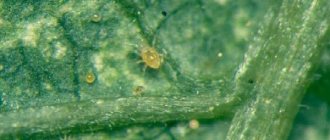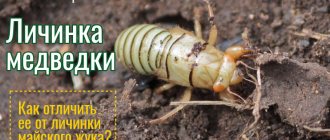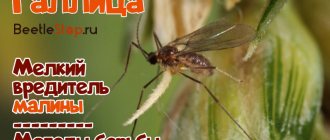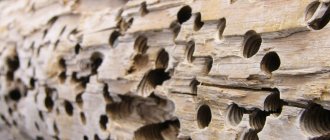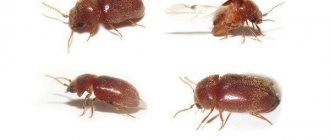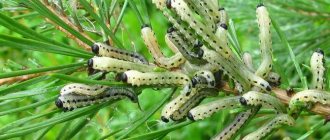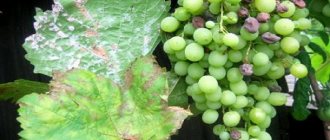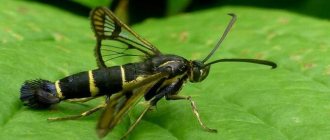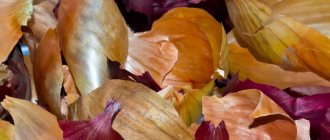A perennial shrub that pleases everyone with its healthy and aromatic berries is found in almost every garden. However, it also attracts various pests, including weevils, which appear in early spring and cause significant damage to plantings. To correctly select the most effective means to combat them, you need to have an understanding of insects and know their strengths and weaknesses.
What is a weevil - a raspberry pest?
There are many varieties of weevils. They show interest in different cultures, causing significant harm to all of them. Almost every cultivated plant in the garden can be threatened by a dangerous enemy. The most common types of weevils are: raspberry-strawberry, nodule, granary and apple. They choose different habitats, use different plants for food and are slightly different in appearance.
The raspberry-strawberry weevil (raspberry flower beetle) harms raspberry bushes, strawberries, blackberries and other plants (including herbs and flowers) growing in suburban areas and in natural conditions. Pests are found everywhere: in the central part of the Russian Federation, in the southern regions, in Siberia and Asia. It is difficult to find only in deserts, in the Far North and in the mountains.
Where do weevils come from on raspberries? Most often, they move from neighbors or from wild raspberry thickets growing nearby.
External description
Small insects that have settled on crops are not so easy to notice. Their size rarely exceeds 3 mm.
Distinctive features of the raspberry flower beetle:
- elongated rostrum (because of the proboscis, weevils are often called elephant weevils);
- black color of the oval body covered with gray stubble;
- long paws;
- elytra with grooves;
- geniculate pair of antennae;
- long paws.
The raspberry-strawberry weevil cannot fly. However, this feature does not in the least prevent it from spreading throughout the territory, including neighboring gardens, at high speed, since it moves quite quickly.
Stages of development
For the winter, weevils settle in the upper layers of soil or vegetation lying on the ground. They leave their shelters in mid-spring (the time of awakening of beetles in different regions is different). In this case, the average daily readings on the thermometer should not be lower than +12…+14 degrees. At first, the awakened weevils feed on young raspberry shoots, as well as juicy young roots.
Having reached sexual maturity (usually in June), the pests begin to mate. When buds appear on the crop, the female gnaws a hole in one of them and lays an egg up to 0.5 mm in size. After this, she seals the hole with her mucus and gnaws the load-bearing part of the stem on which the peduncle is located. After some time, the damaged bud ends up on the ground.
One individual is able to lay 50...100 eggs per season.
A week later, a white larva emerges from the egg (it turns brown during development), the body length of which reaches 5 mm. She uses the contents of the bud in which she is located for food. During the period of its stay in the larval stage (it is 20...30 days), the weevil eats all the insides of the bud. The larvae pupate in it, after which (after 8...11 days) young raspberry flower beetles (imago) appear. When hatching, the pests feed on raspberry foliage, young shoots, not yet ripe berries and inflorescences of remontant varieties. Mass emergence of weevils from pupae is usually observed in the second half of July.
During one season, as a rule, only one generation of weevils develops (in regions with warm climates this process does not stop).
When temperatures drop to +10...+12 degrees, weevils go to winter, hiding in the ground or piles of plant debris.
The lifespan of pests is 10...12 months.
What harm do weevils cause to raspberries?
The close proximity of strawberry beds to raspberry plantings leads to massive contamination of the garden. The first to be attacked by elephants are strawberry bushes, the buds on which appear earlier. From there, the weevils move onto the blooming raspberries. Thus, the parasites have the opportunity to lay all their eggs in plant buds and maximize their numbers.
Insects harm raspberry bushes at the adult and larval stages. As a result of their impact, you can lose up to 80% of the crop (depending on the size of the beetle colony); the green mass of plants also receives serious damage.
The earliest raspberry varieties especially suffer from weevil infestation. Pests choose to lay eggs precisely those inflorescences that could subsequently form into the largest fruits.
Due to damage to the root system, young raspberry shoots, which should begin to bear fruit next season, may die. Berries (still green), emerging from inflorescences untouched by beetles, are also destroyed by weevils.
Fight against codling moth, raspberry gall midge, apple blossom beetle
We have not discussed all the pests, because many of them cannot cause any harm in small private gardens, but only cause modest damage. In our gardens, as a rule, an abundance of different crops grows mixed together, and this makes the garden resemble a wild forest in terms of the number of different insects: here many pests are destroyed naturally.
So, in the forest on raspberries you will not find raspberry stem gall midge (round growths at the base of the stem), and on an apple tree you will not find the codling moth. There are relatively few of them in our gardens. In industrial gardens, these pests can multiply en masse.
The gall midge often ends up on the site along with purchased raspberry seedlings from the nursery, where it lives more than at ease (no one fights it there: what fool would cut out and burn shoots that can be sold?), and for several years it can “rage” ” in your raspberry garden, and then gradually goes away. Cutting out and burning every single affected stem significantly speeds up its care.
The codling moth is difficult to destroy chemically, as it produces many generations over the summer, and you will have to spray endlessly. A simple way to reduce its population is not to leave the carrion overnight, pick up the fallen apples and throw them into a barrel of fertilizer. (Again, in an industrial garden, this measure is impossible, but in our garden with single apple trees, it is quite feasible.) The fight against the codling moth is another reason to cut down dubious apple trees in the garden, small sour apples from which no one collects, and they lie under the carpet. trees, multiplying the codling moth.
The apple blossom beetle, which overwinters in the soil, can be covered with soil in the fall and removed in May. And having bought a car of peat, sand, crushed stone, store them under the fruit tree, which is why its productivity invariably increases: the codling moth, flower beetle and other pests are buried.
How to recognize a weevil on a raspberry bush
You can understand that raspberries have been invaded by the raspberry flower beetle by carefully examining the plantings. There are several signs that indicate the need to take immediate measures to save the culture.
- When examining raspberry leaf blades, you can find small holes on them left by gnawing parasites. This is the first evidence of the presence of a pest on the site.
- Drooping branches of young shoots may indicate that the roots of the plants have been damaged by voracious insects.
- Inflorescences falling from plants and lying on the ground during budding, trimmed pedicels with buds hanging on them are a sure sign that you can’t expect an abundance of tasty berries. Taking a fallen bud in your hands, you can find a small egg or an already emerging larva inside.
The culprits of the described troubles are raspberry flower beetles. You should not hope that the problem will go away on its own.
Repellent plants
Flowers and herbs should be planted around the perimeter of the strawberry plantation. This way they will protect a large area from the pest. It is allowed to place plants between berry bushes.
Onions and garlic help well in the fight against insects. You need to plant 1 clove for every 4 bushes. Cut off the leaves and arrows more often so that the smell remains strong.
Marigolds will help avoid damage to flowering buds. Sow the seeds among the strawberry bushes. You can place calendula and other plants with a strong smell next to the berry. Basil, parsnips, celery, and amaranth will help repel pests.
Parsley, dill, and petunia are considered insecticidal plants. Plant these crops along the perimeter of the plantation or every 3 rows of bushes. Plants will prevent pest eggs and caterpillars from appearing on the leaves.
How to get rid of a pest
If a weevil appears in the garden, you can’t hope for a good raspberry harvest. Only correctly selected and timely measures to save plantings can help cope with this serious problem.
Chemical and biological drugs
Many people are skeptical about the use of chemicals to treat plantings. But in some, especially advanced cases, it will not be possible to do without such funds. However, it should be understood that toxic drugs cannot be used during fruiting. The first treatment with reagents is carried out about a week before the flowers appear. If it was not possible to completely exterminate the insects, you can reuse the chemicals after picking the berries.
Alatar
The drug allows you to quickly get rid of most pests, not only in private gardens. It can also be used to combat all types of weevils at home and on large farms.
Alatar consists of several components, the main ones being cypermethrin and malathion. These elements are the active ingredients of the product. When raspberry flower beetles enter the intestines for a short period of time, they cause paralysis, and after a day or two the pest dies. The effect of the drug lasts about three weeks.
What's good about Alatar:
- universal;
- quickly begins to act;
- effective for a long time;
- adheres well to foliage and is not washed off with water;
- convenient to use.
To process raspberries, you need to dilute 5 ml of the product in 4 liters of water. This amount is enough to process 100 sq.m. landing During the season, bushes are sprayed once with Alatar solution.
Iskra M
An organophosphorus-type enteric pesticide contains malathion, which effectively kills both adult weevils and their larvae. Insects die within 30...90 minutes after the plantings are treated. Spraying is carried out in calm and dry weather.
Treatments are carried out before raspberries bloom and after picking the berries. It should be remembered that the drug is dangerous not only for humans. It is destructive to plant-pollinating insects, as well as to the inhabitants of water bodies.
A solution is prepared for spraying: 10 ml of the drug is required per bucket of water. Each raspberry bush usually consumes about 200 ml of liquid.
What is the difference between the chemical:
- ability to destroy a large number of pest species;
- long period of protective action;
- compatibility with many reagents;
- almost instantaneous impact.
In hot weather, the effectiveness of the pesticide increases.
The chemical must not be mixed with compounds containing alkali, copper and sulfur and with sulfide subcrusts.
Fufanon-Nova
Even in small concentrations, a solution of this drug with malathion as a base is destructive for weevils. Beetles begin to die within an hour after exposure to the chemical (contact-intestinal type).
Reagent Features:
- toxicity to pests;
- resistance to temperature changes and sunlight;
- lack of phytotoxicity;
- high danger to beneficial insects;
- incompatibility with alkaline preparations.
Over time, weevils can develop immunity to the active ingredient Fufanon. In this regard, it is recommended to alternate treatments using this drug with the use of other means: pyrethroids or complex formulations.
To destroy the raspberry and strawberry pest, you need to dilute 11.5 ml of the chemical in 10 liters of water. Liquid consumption: 1.5 liters of solution is enough for 10 sq.m of planting.
During the growing season, 3 treatments of raspberry bushes can be carried out:
- in spring, after the snow melts;
- when the first buds appear;
- after picking berries.
After treatment, you cannot eat raspberries for at least 21 days.
Taran, VE
The drug belongs to the category of pyrethroids with contact-intestinal effects. It paralyzes the central nervous system, the insect dies immediately after the poison enters the body.
Benefits of the chemical:
- low consumption;
- high rate of destruction;
- lack of phytotoxicity;
- duration of exposure (up to a month).
The drug is more effective against pests when the temperature rises.
The working fluid is prepared from 1 ml of reagent and 10 liters of water. Treatment should be carried out once, during the appearance of buds. One bush of crop requires 200...300 ml of solution.
Those who do not like to use chemicals are advised to pay attention to biological products, which also help get rid of weevils on raspberries.
Iskra-Bio
An environmentally friendly emulsion, harmless to warm-blooded organisms, is produced on the basis of avertin, which is a waste product of soil fungi. The drug kills weevils in the adult and larval stages.
What's good about this product:
- the harvest can be harvested within 3 days after treatment;
- the effectiveness of the effect increases with increasing temperature values (the most destructive bioinsecticide for weevils is when the thermometer reading is above +28 degrees);
- pests immediately stop feeding after contact with the product;
- the drug does not accumulate in plant tissues;
- Parasites do not develop an addiction to the biological composition.
To prepare the solution, 10 ml of Iskra-Bio and 1 liter of water are required. After treatment, weevils die within 2...7 days.
Anthonem-F
The intestinal pesticide is produced on the basis of entomopathogenic nematodes. The environmentally friendly product is used for spraying and watering raspberry bushes. It affects not only adult insects, but also larvae and egg clutches. Predatory nematodes remain viable for two years. With a single application of the product, plantings are protected from weevils and other pests for the entire growing season.
Anthonem is applied with a watering can or sprayer. To do this, 300 g of the drug should be diluted in 2 liters of water. Processing is carried out at a temperature of +10…+28 degrees. Nematodes attack the internal organs of insects; as a result, weevils die 2-3 days after treatment.
The drug can be used in conjunction with chemical and biological means of protection.
Nemabact
The drug also contains natural enemies of weevils - nematodes. They reproduce well in insects, eliminating colonies of parasites within a short period of time.
For treatment, dissolve the product package in 10 liters of water.
Nemabact is resistant to most chemicals; it does not harm humans, animals, plants and earthworms.
Folk methods of fighting weevils
Products that do not pose a danger to humans and the environment are actively used by owners of suburban areas. There are many environmentally friendly methods that can be used to control weevils.
Several effective folk recipes:
- A decoction of hot pepper.
Crushed pods (0.5 kg) are placed in water (5 l) and infused for 3 days. After this, the pan with the mixture is placed on the stove; after boiling, the mixture is cooked for 10 minutes. The broth needs to be removed and left to infuse again. After 2 days, it is filtered, and additional juice from the removed pods is absorbed into it. The liquid is used at any stage of raspberry development.
- Mustard solution.
During raspberry budding, you can spray the bushes with water with 200 g of mustard powder and 100 g of grated soap diluted in it.
- Ammonia.
The pungent smell of ammonia repels weevils. To prepare the product, 1/2 tbsp. alcohol is diluted in 1 liter of water. After this, the composition is sprayed over the raspberry tree.
- Infusion of tansy flowers.
1 kg of fresh inflorescences (or 200 g of dry ones) is soaked in 2.5 liters of water. After 2 days, the composition should be boiled and a little grated laundry soap should be added. After filtration, the liquid is diluted with water so that its volume is 5 liters.
White spot (septoria)
Fungal septoria occurs due to marsupial fungi - Septoria rubi. The fungus spreads along shoots, foliage and stems.
Fungi actively reproduce at high air humidity. Also, if the plantings are thickened, there is an excess of moisture in the soil, with sudden changes in weather.
The disease can be detected at the end of June. Dark brown spots appear on the leaves.
Later in autumn, the brownish spots become lighter, and black dots appear in the center. At these points there are spores. The spots spread across the leaf and it dries out.
Blurred spots of various shapes are visible on the petioles; they are reddish-purple. Almost every shoot is also spotted. The spots grow within 14 days.
Prevention and treatment
For prevention, weeds are constantly pulled out, diseased stems are cut out and burned. Thin out plantings.
For treatment in early spring, when the buds have not yet swelled, raspberries are treated with Nitrophen, dissolving 200 g in a bucket of clean water (10 l).
Before the buds open, they are sprayed with Zineb 2 times: 1 time, pour 50 g of the drug into a bucket of water (10 l) and spray, and after 10 days they are also treated with Zineb solution, placing 30 g in a bucket of water. After picking the berries, the bushes are sprayed with Bordeaux mixture.
The best time to process raspberries
If we talk about chemical reagents, then the first spraying is best done after the snow melts and the ambient temperature rises to +12...+14 degrees. At this time, pests appear after hibernation and it is possible to destroy them before they have time to cause damage to the plantings. If it was not possible to process the raspberries on time, you can do the work later, but you need to do it before the plants bloom. Spraying pesticides after harvest will help kill any remaining beetles.
Biological products and formulations made according to folk recipes can be used at any time.
Collecting bugs
The weevil on strawberries, the photo of which interests many gardeners, can even be collected by hand. To do this, in the evening, a sheet of paper or newspaper is spread under each planting bush.
In the morning, the plants shake slightly and the beetles fall onto the litter. The coating with them must be burned.
Preventive measures
If you are not lazy and follow some rules, you don’t have to worry about weevil infestations.
- First of all, in the fall you should remove all plant debris.
- When frost occurs, it is recommended to lightly dig the soil. Pests hidden in the top layer of soil, once on the surface, will die from the cold. The same procedure is useful in early spring.
- The ground around the raspberry bushes needs to be mulched. The best choice for these purposes is needles, which flower beetles cannot tolerate.
You should not plant raspberries and strawberries next to each other, as the weevil harms both crops.
Caring for plantings in the garden and vegetable garden and timely control of pests that appear there help to get a good harvest.
Prevention
Prevention of the spread of gall midges in raspberry fields includes the following measures:
- Careful selection of exclusively healthy seedlings for planting. Damaged planting material is discarded.
- Selecting a raspberry variety that is resistant to the pest. For example, Creed, Phenomenon, Faith. The gall midge avoids these varieties. Another option is to choose only remontant varieties for planting. Complete autumn removal of shoots will help prevent the development of stem gall midges in the raspberry forest.
- Avoid thickening the raspberry plantings. To do this, they carry out sanitary pruning in a timely manner and practice growing raspberries on trellises. The sun's rays should penetrate deep into the bush.
- Fragrant plants are planted around the raspberry plantation. The insect cannot tolerate the aromas of onions, parsley, dill, and garlic. Repellent plants need to be planted in such a way that they grow next to the raspberry tree all season. But it should be taken into account that this measure is effective only in combination with others, and parsley alone in a raspberry garden will not save you.
- Raspberries should not be filled with water in large quantities. High humidity levels stimulate the development of larvae and attract gall midges. For the same reason, bushes are not planted in lowlands where moisture accumulates.
- To get rid of the insect and prevent it from overwintering quietly, the soil around the raspberries must be loosened, especially before winter, or dug up shallowly.
- It is advisable to use pine sawdust as mulch. Soil covered with mulch material will be inaccessible for wintering for most pests. The resinous smell of pine needles will repel insects.
The appearance of Galitsa on raspberries almost always indicates incorrect agricultural practices and neglect of the garden. If you follow all the recommendations listed, the appearance of gall midges on the plantation can be reduced to zero.
Know the enemy by sight
The weevil has many varieties. A characteristic feature of the beetle is the elongated part of the head, which resembles a pipe. The body is 3 mm long, gray-black. This little bug can destroy most of your crop. Strawberries are affected by raspberry-strawberry and nettle-leaf pests. The weevil is especially active in the spring during the growth and flowering of strawberries. The female weevil deposits larvae in the buds, which destroy them.
Adult weevils overwinter in fallen leaves, trying to get as close as possible to the roots and new leaves. In the spring, as soon as the ground warms up above 10 degrees, weevils begin to crawl out.
If strawberries are damaged by a weevil, the strawberry yield will be reduced and the berries will become small and not sweet.
To prevent the weevil from taking over your area, measures to combat it must be taken from the very beginning of spring. When a pest is detected, it is necessary to begin its destruction. The measures taken will help preserve strawberries and get a rich harvest.
Harm of weevils to the garden
The time of egg laying is the most dangerous for berry crops. During this period, the buds separate, and after that the female bites the stalk. This leads to drying out and death of the buds. So, up to half the harvest may be lost.
Scientists have proven that this pest loves male strawberry flowers, which have long stalks.
Young weevils can be found in July. They eat leaves and nibble berries. And in the fall they go to sleep in the soil under a bush. Therefore, treat your strawberry bushes twice a year (in spring and summer).
The weevil beetle not only destroys strawberries, it also harms raspberries, currants, and strawberries. In addition to damaged and dried buds, you can also notice broken stems.
If you missed the processing time before the weevils appeared, then the situation can be saved. Treat strawberries before reproduction and young adults begin to emerge.
Description and features
The Weevil family (lat. Curculionifae) is distinguished by its species diversity and belongs to the order Coleoptera or Beetles. In Russia there are more than 5,000 species of weevils, which are relatively small in size. In the tropics, where the majority of species live, there are real giants up to 5-6 cm in size. The insect kingdom is limitless, with new species being described every year.
Even a person very far from entomology is familiar with the weevil. Often in parks and gardens you can see a cute emerald green bug with a yellow belly and a proboscis curved like an elephant’s.
It seems incredible that this is a close relative of the malicious pests that deprive us of strawberries and apples, spoil huge amounts of grain, and destroy wooden buildings. And the green weevil itself, although it is omnivorous, will not pass by cultivated plantings. Weevil beetle in the photo.
Weevils of different species vary greatly in appearance. The body shape can be elongated, flat, diamond-shaped, or in the form of a hemisphere. The color of the chitinous cover ranges from light to brown and black, often with spots.
A distinctive feature of the beetle is the presence of a protruding head capsule, from which weevils got their name. The rostrum in some species is small in size, and in some it is several times larger than the size of the body.
The food of both the adult and its larvae is often the internal tissues of plants. Herbaceous flowering dicotyledons are the favorite food of weevils. Some varieties prefer wood, bark, algae, and mushroom mycelium. The larval stage is often spent in the ground and gnaws out the root system, but some varieties develop on above-ground plant organs.
The weevil family is diverse in appearance and has high variability in taste preferences. The species of weevils most known to humans are those that attack cultivated plants or valuable tree species.
Pests of fruit and stone fruit trees:
The apple flower beetle has a black body, lighter legs, the larvae infect the buds, and the adults live in the fruits, feeding on their pulp.
Bukarka is 2-3 mm in size, gray-blue in color, the pest destroys buds and flowers.
The elephant goose is a beetle 0.5 cm in size, the chitinous cover is crimson, shiny. Adult insects feed on flower buds, laying eggs in young ovaries.
Spot tar can cause the death of an entire tree. The female lays eggs deep in the bark, and the larvae bore winding passages before pupation.
Pine elephant weevil is a pest of coniferous forests. The insect is 1-1.2 cm in size, brown in color with small yellow spots. The larvae live under the bark, and the adults gnaw out the bark of young branches, causing the death of young pine shoots.
Nut fruit is the culprit of empty and wormy nuts.
The green weevil is a 12 mm long pest with a smooth cover ranging from light green to brown. The abdomen is usually lighter in color. Nibbles foliage, buds, buds of fruit, berry and other plants. The larvae feed on small parts of the root system.
The granary weevil is a brown grain pest, about 3 cm in size. Together with grain, it has spread throughout the world. Females gnaw out the shell of the grain, lay an egg and cover it with excrement. May cause spoilage of large batches of cereals.
The beet weevil has a scaly chitinous cover with gray stripes. It precipitates young sugar beet seedlings; the larvae in the ground, gnawing on the root, disfigure the root crop. The strawberry weevil is a pest of strawberries and raspberries; it gnaws through the buds to lay eggs.
Varieties
The most common types of bevels are:
- Raspberry-strawberry. The elephant has an oval shape, the color of the body and proboscis is black. Covered with dense light gray bristles. Grows in length up to 3 mm. He prefers to settle in the European part of the country, as well as in Altai and Siberia. It feeds on blackberries, raspberries, strawberries, rose hips, strawberries and other berries. Leads an active life from May to June. Overwinters in the soil.
Raspberry-strawberry weevil
- Small black. The body of this individual looks like an elongated oval. The trunk is short and wide at the end. Color – black or brown, but with a shiny tint. The body is decorated with chiseled grooves and sparse gray stubble. The length of the elephant is 5 mm. He lives only in the European part. The diet consists of berries, beets, alfalfa and conifers. The beetle is active only in the dark.
- Burdock or rough. The body has the shape of an oval, its color is light brown. There are also sparse whitish bristles. The insect is called rough because of the presence of yellow scales and raised tubercles on its body. The proboscis of this beetle is not long; on the contrary, it is short and widens towards the base. The length of the insect is 7 mm. It is widespread everywhere. Prefers to eat buds, tops of berries or vegetables. The larvae eat mainly roots. Most active during cloudy weather. He has good acting skills: if you touch him, he will pretend to be dead.
Burdock elephant
- Furrowed. The elephant is colored brown or gray-black with yellow streaks. There are dotted grooves on the body. The proboscis is short and wide. Length – 10 mm. Prefers to live in “warm” places: in a greenhouse, greenhouse or nursery. It can feed not only on berries, but also on industrial crops. Does not disdain decorative flowers. The beetle has a special love for the grapevine. Adult insects eat buds, leaves and fruits, while the larvae destroy the roots.
- Alfalfa. The largest beetle on this list. Its length can be up to 12 mm. The body color is black or brown. It is completely covered with gray scales and yellow bristles. You can find it in the Caucasus, in the European part of Russia or in Southern Siberia. In addition to berries, it actively nibbles on legumes, vegetables, and hops. Active - from May to July in the morning or evening.
